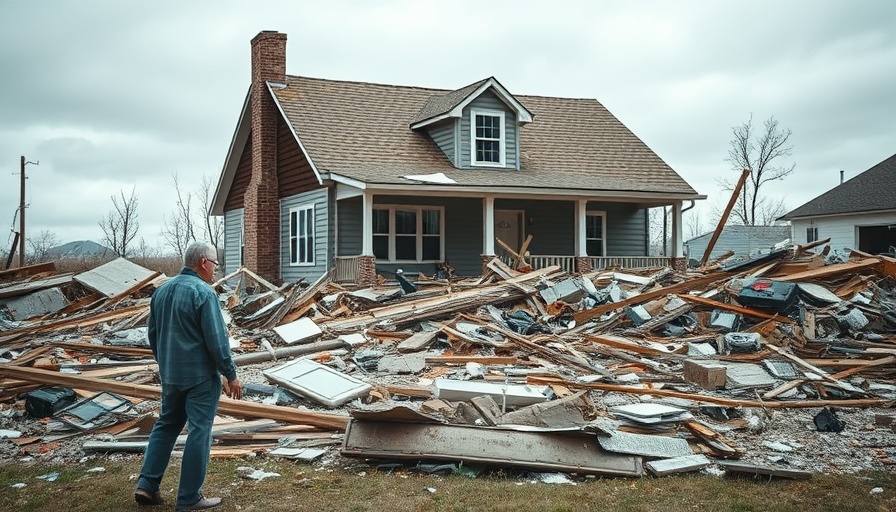
Tornadoes Devastate the Central U.S.: A Deadly Prelude
In what has been heralded as one of the most destructive storms in recent history, tornadoes and violent winds swept through the central United States, wreaking havoc in states from Oklahoma to Indiana. As communities grapple with the aftermath, the storms have not only claimed seven lives but also leave a trail of destruction that challenges local governments and emergency services.
Impact on Lives and Infrastructure
Witness accounts from areas like Lake City, Arkansas, tell chilling tales of destruction. Cody Ferguson, a homeowner, shared his experience of huddling in a storm shelter as winds up to 150 mph tore through his neighborhood. His narrative reflects a chilling reality faced by many: “Just real loud rumbling, a lot of bangs, debris.” Such sentiments resonate deeply as families confront the abrupt loss of their homes and, in some tragic instances, loved ones.
The destruction is staggering—homes flattened, buildings reduced to rubble, and cars tossed like toys. Authorities have noted that cleanup efforts are just beginning, and with further storms and potential flash flooding on the horizon, the situation remains critical. Search and rescue operations continue across affected areas, emphasizing the urgency of getting resources to those in need.
Beyond the Physical: Emotional and Psychological Effects
The emotional toll of such disasters cannot be overstated. Survivors are not only faced with physical loss but must also grapple with the psychological implications of such traumatic events. Mental health professionals stress the importance of community support systems in the aftermath of disasters. Being displaced and losing personal belongings can trigger anxiety, depression, and feelings of helplessness among those affected.
For instance, Willie Barnes of Selmer, Tennessee, expresses gratitude for escaping physical harm but acknowledges the emotional burden that follows. “Thank God we came out without a scratch,” he stated, embodying a mixture of relief and grief for lost homes and community. This highlights an urgent need for mental health resources as communities begin to recover.
The Role of Emergency Services
Emergency services across affected areas have been working tirelessly since the storms hit. As the Tennessee Highway Patrol highlighted, recovery operations are ongoing, with responders conducting searches through debris to ensure that no one remains trapped. Local and state governments face the daunting task of mobilizing aid quickly to support affected families who have lost everything.
With high winds crippling infrastructure, many regions have found themselves without power and essential utilities. As rescue operations continue, local volunteers have stepped in to provide food and shelter for those displaced, showing the power of community spirit even in the darkest times.
Looking Ahead: Future Storms and Preparedness
As the weather patterns shift, experts warn that more severe storms could be on the horizon. The National Weather Service reports that while tornadoes can occur at any time, spring often brings an uptick in tornado activity across the central United States. Thus, preparedness is vital. Families should create emergency plans, stay updated on weather forecasts, and have supplies ready in case of severe weather events.
In light of these recent tragedies, institutions are being urged to improve infrastructure resilience to withstand extreme weather conditions. Invest in community education about storm preparedness can save lives and mitigate losses in the future.
Conclusion: United in Recovery and Resilience
As these communities begin to plot their paths to recovery, they illustrate an enduring spirit of resilience and unity in the face of disaster. The collaborative efforts of local governments, emergency services, and community members signify hope amid the chaos. This tragic event serves as a sobering reminder of nature's fury and the importance of being prepared.
As news of this devastation continues to unfold, it's essential for those around the country to stay informed and support relief efforts. Together, we can ensure that those affected by these storms do not face their recovery alone.
 Add Element
Add Element  Add Row
Add Row 



Write A Comment